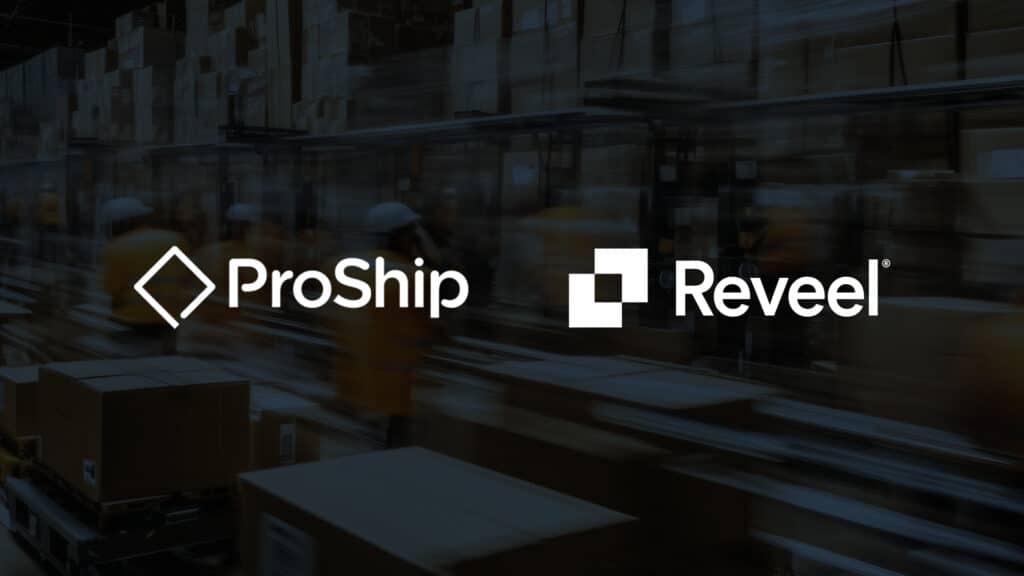Reveel Blog

- Reveel
How much is your organization spending on shipping? A business typically spends up to 4% of its total sales on shipping, but this percentage can vary depending on the company’s size, total sales volume, or the type of products being shipped and received. In short, shipping costs represent a significant expense for companies of all […]

- Reveel
FedEx has implemented several new surcharge structures and adjusted existing ones to reflect current market conditions and operational costs. These surcharges directly impact your bottom line, affecting everything from product pricing strategies to customer satisfaction. So there’s a lot at stake when it comes to your parcel spend management strategy this year. This guide will […]

- Josh Dunham
The Latest in Parcel Shipping The professionals in today’s constantly changing parcel industry are busier than ever. With that in mind and the goal of providing parcel shippers with in the moment, helpful analysis of important developments, I invite you to visit Reveel’s YouTube channel to check out our newest videos from Jack McCrum, our […]

- Reveel
In this episode of the Let’s Talk Supply Chain podcast, recorded live at Manifest 2025 in Las Vegas, Sarah Barnes-Humphrey connects with Marc Aliotta, VP of Partnerships at Reveel and Jack Margeson, VP of Alliances at Deposco to discuss innovation and the strategic partnership between Reveel and Deposco. Listeners will learn more about: Listen today […]

- Reveel
UPS shipping surcharges and fees can make or break your parcel spend budget. As the year continues, UPS has implemented several notable increases to fuel surcharges, payment processing fees, and late payment penalties. The 2025 adjustments represent some of the most substantial changes in recent years, reflecting broader economic pressures and the carrier’s ongoing investment […]

- Reveel
Parcel shipping has always been expensive, but this year’s logistics ecosystem has presented a particular challenge to even the most experienced shippers. Why? Because the true cost of shipping has skyrocketed. FedEx and UPS raise their base rates annually, but surcharges, new billing rules—such as cubic volume assessments and credit card fees—can add unexpected costs […]

- Reveel
Managing your business’s parcel shipping spend is a logistics-wide effort that analyzes everything from carrier contracts to parcel invoices. And with shipping costs on the rise, every dollar counts. Carriers implement regular rate increases and surcharges every year, but shipping costs have risen significantly. Parcel shipping for FedEx and UPS has increased by 30% cumulatively […]

- Reveel
Omnichannel Shipping Optimization for Better Customer Experience Retail companies face significant challenges in managing parcel shipping costs. The rise of e-commerce and omnichannel fulfillment has made efficient parcel shipping crucial for profitability and customer satisfaction. Complex shipping contracts, fluctuating carrier rates, and intricate surcharge structures often hinder companies from effectively tracking and optimizing their shipping […]

- Reveel
Data-Driven Solutions for High-Volume Consumer Product Shipping Consumer Packaged Goods (CPG) companies face significant challenges in managing parcel shipping costs. The rise of e-commerce and direct-to-consumer (DTC) channels has made efficient parcel shipping crucial for profitability and customer satisfaction. Complex shipping contracts, fluctuating carrier rates, and intricate surcharge structures often hinder companies from effectively tracking […]

- Reveel
Temperature-Controlled Logistics & Regulatory Compliance Excellence Pharmaceutical and life sciences companies face unique and critical challenges in managing parcel shipping. The need for timely, secure, and compliant shipments is essential to ensure patient safety, regulatory adherence, and operational efficiency. Rising shipping costs, regulatory requirements, and the complexity of global supply chains make effective parcel shipping […]

- Reveel
Access our informative webinar recording that reveals how U.S. AutoForce transformed its logistics operations through advanced shipping optimization strategies. In this on-demand session, you’ll explore the significant impact of automation and actionable insights in driving both efficiency and cost savings. Learn about U.S. AutoForce’s successful implementation of shipping optimization solutions, including how they saved $75,000 […]

- Reveel
Reduce Costs & Streamline Logistics for Critical Supply Chain Components Auto parts suppliers operate in a highly competitive and time-sensitive industry where efficient parcel shipping is critical to meeting customer demands. With the rise of e-commerce, just-in-time inventory systems, and growing customer expectations for fast deliveries, auto parts suppliers face mounting shipping challenges. Managing costs, […]

- Reveel
Strategic Solutions for Dimensional Weight Challenges & Specialized Handling Manufacturers that ship large, oversized, or heavy packages face unique challenges in managing parcel shipping costs. Carriers impose higher shipping rates, dimensional weight (DIM) pricing, and complex surcharges, making it difficult to control expenses. With rising shipping costs and evolving carrier policies, manufacturers need advanced tools […]

- Reveel
Shipping for large-scale manufacturing isn’t just about moving products from point A to point B—it’s about maintaining a smooth, cost-effective supply chain that meets customer demands and keeps businesses competitive. And with large, heavy, or oversized packages, efficient shipping isn’t just a necessity—it’s a competitive advantage. However, navigating the complexities of parcel spend management presents […]

- Reveel
With carriers constantly, and often unexpectedly, increasing shipping costs with rate changes and new rules around package size and weight, shippers must remain agile so they can quickly adapt to shifting conditions. However, with the power of predictive analytics, businesses can gain a competitive edge by forecasting future trends and adjusting their shipping strategies accordingly. […]

- Reveel
Last time, we introduced why incorporating advanced AI-driven analytics into your parcel shipping spend can be a real advantage. This time, we’ll take a closer look at another benefit of our new Analytics Hub – the ability to use it to maintain a strong relationship with your carriers. It remains true that many businesses still […]

- Reveel
As any business based around shipping goods to customers already knows, optimizing parcel spend is crucial for maintaining a healthy bottom line. There are numerous challenges along the way, including deciphering annual carrier rate increases, determining how to adjust variables to reflect changes in weight or size allowances, and balancing shipping charges with maintaining a […]

- Reveel
In today’s fast-moving shipping landscape, carrier pricing is no longer static—and UPS’s latest announcements make that clearer than ever. Between new surcharges, increased fees, and revised policies, businesses are facing a constantly shifting cost environment. For companies that rely heavily on UPS for their shipping, staying ahead of these changes is essential to controlling costs […]

- Reveel
Reliability, cost-efficiency, and data security are non-negotiable areas in healthcare logistics and shipping. As the healthcare industry continues to face increasing demands for faster and more transparent parcel delivery services, UPS has stepped up with its Healthcare Initiative. The initiative is focused on providing specialized logistics solutions for healthcare providers, pharmaceutical companies, and medical supply […]

- Reveel
As we dive into 2025, the parcel shipping landscape is undergoing significant shifts, and businesses need to stay informed to navigate these changes effectively. From rising costs to evolving carrier strategies, this year promises both challenges and opportunities for shippers. Understanding the Impact of Rate Increases Each year, the big players in the shipping industry […]

- Reveel
In the days leading up to its legendary Thanksgiving parade Macy’s made the headlines not because of the holiday season, but instead for the more than $150 million in parcel shipping expenses an employee hid over an extended period – an amount comparable to the company’s net income in 2023 according to The New York […]

- Reveel
In a recent Wall Street Journal article, Macy’s disclosed that an employee had concealed up to $154 million in delivery expenses over several years, leading to delayed quarterly results and raising concerns about the company’s financial oversight. This incident underscores the critical need for robust financial controls and real-time expense monitoring within organizations. Reveel’s Parcel […]

- Reveel
This article was contributed by ProShip, a key Reveel partner specializing in multi-carrier shipping software solutions. The holiday season is a time for bringing joy and cheer through your brand’s store and shipping operations. Ensuring timely delivery is essential during peak season, navigating carrier pricing complexities, partnering with carriers for capacity and order throughput is challenging. […]

- Reveel
In the life sciences industry, efficient and reliable shipping is not just a logistical challenge—it’s a critical component of business success. Whether it’s delivering temperature-sensitive pharmaceuticals, high-value laboratory equipment, or time-sensitive clinical trial materials, companies in this sector face unique shipping complexities. Unfortunately, this area of significant spending has been left unmanaged for years despite […]





